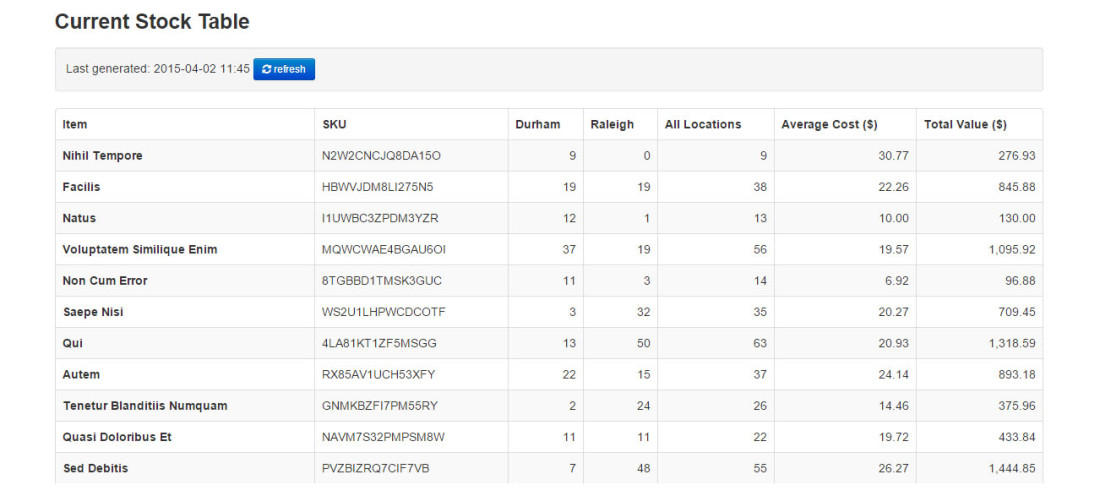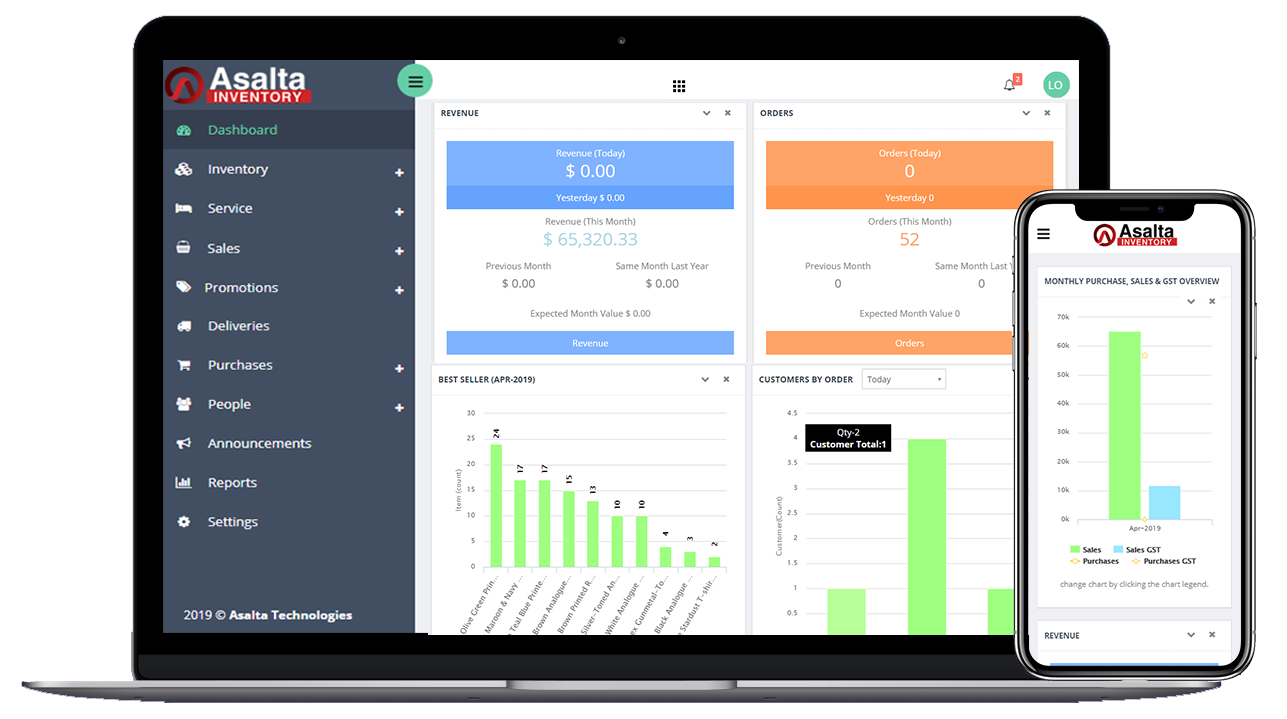Inventory program for small business – Inventory programs for small businesses are essential tools that can help streamline operations, reduce costs, and increase profitability. This comprehensive guide will provide an overview of the benefits, features, and types of inventory programs available, as well as best practices for implementation and successful management.
Understanding the importance of inventory management for small businesses is crucial. Effective inventory management enables businesses to track stock levels, optimize ordering, minimize waste, and improve customer satisfaction. Inventory programs can automate these processes, providing real-time data and insights to help businesses make informed decisions.
Introduction: Inventory Program For Small Business

Inventory management is the process of overseeing the flow of goods and materials within a small business. It involves tracking inventory levels, optimizing stock levels, and managing the movement of goods from suppliers to customers.
Effective inventory management is crucial for small businesses as it helps to ensure that they have the right products in stock to meet customer demand, while also minimizing the risk of overstocking or understocking.
Importance of Inventory Management
- Improved customer satisfaction:Effective inventory management helps to ensure that customers can find the products they want, when they want them.
- Reduced costs:By optimizing stock levels, small businesses can reduce the cost of holding inventory, as well as the cost of lost sales due to stockouts.
- Increased efficiency:A well-managed inventory system can help to streamline operations and improve efficiency, allowing small businesses to operate more effectively.
- Improved cash flow:Effective inventory management can help to improve cash flow by reducing the amount of money tied up in inventory.
Features of an Inventory Program
An inventory program is a valuable tool for small businesses to manage their stock levels, track sales, and optimize their inventory processes. By utilizing an inventory program, businesses can streamline their operations, reduce costs, and enhance customer satisfaction.
Benefits of an Inventory Program
- Improved Stock Management:An inventory program provides real-time visibility into stock levels, enabling businesses to avoid overstocking or understocking.
- Enhanced Sales Tracking:By tracking sales data, inventory programs help businesses identify best-selling products, optimize pricing, and forecast future demand.
- Reduced Costs:Inventory programs can help businesses reduce storage costs, minimize waste, and optimize purchasing decisions.
- Improved Customer Satisfaction:By ensuring product availability and timely delivery, inventory programs enhance customer satisfaction and build loyalty.
Essential Features to Look for in an Inventory Program
- User-friendly Interface:The program should be easy to navigate and use, even for non-technical users.
- Barcode Scanning:Barcode scanning capabilities simplify inventory management and reduce errors.
- Multi-location Support:For businesses with multiple locations, the program should support inventory tracking across different warehouses or stores.
- Reporting and Analytics:The program should provide robust reporting and analytics to help businesses make informed decisions.
- Integrations:Integrations with other business systems, such as accounting or e-commerce platforms, can streamline operations.
Examples of Inventory Programs Tailored for Small Businesses
- Zoho Inventory:A cloud-based inventory management solution with features like barcode scanning, multi-location support, and order fulfillment.
- QuickBooks Commerce:An inventory management tool integrated with QuickBooks accounting software, offering features like inventory tracking, sales order processing, and reporting.
- Shopify Inventory:A cloud-based inventory management system designed for e-commerce businesses, with features like multi-channel inventory management, product catalog management, and order tracking.
Types of Inventory Programs

Inventory programs can be categorized into three main types based on their deployment method: cloud-based, desktop, and mobile. Each type offers unique advantages and drawbacks, making it suitable for different business needs.
Cloud-based Inventory Programs
Cloud-based inventory programs are hosted on remote servers and accessed through an internet connection. They offer several advantages:
- Accessibility:Cloud-based programs can be accessed from anywhere with an internet connection, allowing for remote management and collaboration.
- Scalability:They can easily scale up or down to meet changing business needs, without the need for additional hardware or software.
- Automatic updates:Cloud-based programs are automatically updated by the vendor, ensuring that users always have access to the latest features and security patches.
However, cloud-based programs also have some drawbacks:
- Internet dependency:They require a stable internet connection to function, which can be a limitation in areas with poor connectivity.
- Security concerns:Since data is stored on remote servers, there may be concerns about data security and privacy.
- Subscription fees:Cloud-based programs typically require a monthly or annual subscription fee, which can add to the cost of ownership.
Examples of cloud-based inventory programs:
- Fishbowl
- Zoho Inventory
- NetSuite
Desktop Inventory Programs
Desktop inventory programs are installed on a local computer and run on the user’s operating system. They offer the following advantages:
- Local control:Desktop programs provide complete control over data, as it is stored on the user’s own computer.
- No internet dependency:They can be used offline, making them suitable for businesses that operate in areas with limited internet access.
- Customization:Desktop programs can be customized to meet specific business needs, allowing for tailored features and integrations.
However, desktop inventory programs also have some drawbacks:
- Limited accessibility:They can only be accessed from the computer on which they are installed, making remote management difficult.
- Scalability limitations:Desktop programs may have scalability limitations, especially when managing large amounts of inventory data.
- Manual updates:Users need to manually download and install updates, which can be time-consuming and may result in security vulnerabilities.
Examples of desktop inventory programs:
- QuickBooks Desktop
- Microsoft Dynamics GP
- Sage 50cloud
Mobile Inventory Programs, Inventory program for small business
Mobile inventory programs are designed for use on smartphones and tablets. They offer the following advantages:
- Portability:Mobile programs allow users to manage inventory on the go, enabling real-time updates and remote access.
- Barcode scanning:Many mobile programs support barcode scanning, making it easy to track inventory items and perform stock counts.
- Geolocation:Mobile programs can use GPS to track the location of inventory items, providing visibility into inventory distribution.
However, mobile inventory programs also have some drawbacks:
- Limited functionality:Mobile programs may not offer the same level of functionality as desktop or cloud-based programs.
- Data security:Mobile devices can be vulnerable to security breaches, which could compromise inventory data.
- Battery life:Mobile programs can drain battery life, especially when used for extended periods.
Examples of mobile inventory programs:
- Inventory Now
- ScanSKU
- SkuVault
Implementation of an Inventory Program

Implementing an inventory program is crucial for streamlining inventory management and improving business efficiency. Here’s a step-by-step guide to help you navigate the process effectively.
Steps Involved in Implementing an Inventory Program
- Define Business Requirements:Determine the specific needs and goals of your business, considering factors such as product types, storage capacity, and turnover rates.
- Select Software:Choose an inventory management software that aligns with your business requirements and budget. Consider features, ease of use, and compatibility with existing systems.
- Data Entry and Inventory Setup:Enter accurate and up-to-date product information into the software, including descriptions, quantities, and locations.
- Train Staff:Educate employees on the new inventory system, ensuring they understand its functionality and processes.
- Monitor and Adjust:Regularly review inventory levels, track trends, and make adjustments as needed to optimize stock levels and minimize losses.
Tips for Successful Implementation
- Plan Thoroughly:Dedicate time to planning the implementation process, involving key stakeholders and considering all aspects of the business.
- Communicate Effectively:Keep employees informed throughout the implementation process, addressing concerns and providing clear instructions.
- Start Small:Begin with a limited number of products or a specific department to minimize disruption and gain experience before expanding.
- Test and Refine:Conduct thorough testing before going live and make adjustments based on feedback and performance data.
- Seek Professional Assistance:If needed, consult with an inventory management expert to guide the implementation process and ensure a successful outcome.
Common Challenges and Solutions
- Data Accuracy:Ensure data entry accuracy by implementing data validation rules, training staff, and conducting regular audits.
- Stock Discrepancies:Regularly conduct physical inventory counts to identify and resolve discrepancies between the inventory system and actual stock levels.
- Staff Resistance:Address staff resistance to change by providing clear communication, training, and demonstrating the benefits of the new system.
- Software Integration:Ensure seamless integration between the inventory system and other business applications, such as accounting and sales.
- Ongoing Maintenance:Regularly update the inventory system with new products, adjust stock levels, and monitor performance to ensure optimal functionality.
Best Practices for Inventory Management

Effective inventory management is crucial for businesses of all sizes. It helps optimize stock levels, reduce costs, and enhance customer satisfaction. Here are some best practices to follow for successful inventory management:
Implementing these best practices can significantly improve inventory management, resulting in reduced waste, increased efficiency, and improved profitability.
Inventory Management Techniques
Several successful inventory management techniques can help businesses optimize their stock levels. Some common techniques include:
- First-In, First-Out (FIFO):This method assumes that the oldest inventory is sold first, ensuring that perishable goods are used before they expire.
- Last-In, First-Out (LIFO):This method assumes that the newest inventory is sold first, which can be beneficial for businesses that want to avoid holding onto older stock for too long.
- Just-in-Time (JIT):This method aims to minimize inventory levels by ordering only what is needed, when it is needed. This can reduce storage costs and waste.
Avoiding Inventory Management Pitfalls
Businesses should be aware of common inventory management pitfalls to avoid potential losses and inefficiencies:
- Overstocking:Holding excessive inventory can lead to increased storage costs, spoilage, and obsolescence.
- Understocking:Not having enough inventory can result in lost sales, customer dissatisfaction, and production delays.
- Poor Inventory Tracking:Inaccurate or outdated inventory records can lead to incorrect decision-making and stock shortages.
Case Studies and Examples
Small businesses have leveraged inventory programs to streamline operations, optimize stock levels, and boost profitability. Here are a few success stories:
Case Study 1:
Improved Efficiency and Reduced Costs
- A small retail store implemented an inventory program that automated stock tracking, order processing, and shipping. This reduced manual labor, eliminated errors, and streamlined the supply chain, leading to significant cost savings.
Case Study 2:
Increased Sales and Customer Satisfaction
- An online clothing boutique used an inventory program to manage its vast product catalog. The program provided real-time stock visibility, enabling the store to fulfill orders accurately and promptly. This enhanced customer satisfaction and increased sales.
Case Study 3:
Overcoming Challenges
- A small manufacturing company faced challenges with inventory management due to seasonal fluctuations in demand. An inventory program helped them forecast demand, optimize production schedules, and reduce inventory waste during slow periods.
Concluding Remarks

In conclusion, inventory programs are invaluable assets for small businesses looking to enhance efficiency, profitability, and customer satisfaction. By carefully considering the features, types, and implementation strategies Artikeld in this guide, businesses can select and utilize an inventory program that meets their specific needs and sets them on the path to success.
Top FAQs
What are the benefits of using an inventory program?
Inventory programs offer numerous benefits, including improved accuracy, reduced costs, increased efficiency, enhanced customer satisfaction, and better decision-making.
What are the key features to look for in an inventory program?
Essential features include real-time inventory tracking, purchase order management, reporting and analytics, multi-location support, and integration with other business systems.
What are the different types of inventory programs available?
Inventory programs come in various types, including cloud-based, desktop, and mobile options, each with its own advantages and disadvantages.
How do I implement an inventory program successfully?
Successful implementation involves planning, data preparation, training, and ongoing monitoring and evaluation.
What are some best practices for inventory management?
Best practices include regular inventory audits, setting safety stock levels, optimizing inventory turnover, and leveraging technology to automate processes.